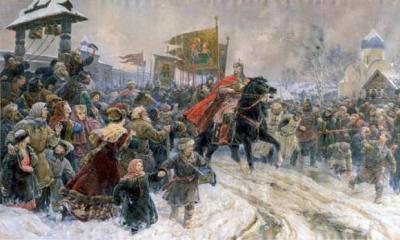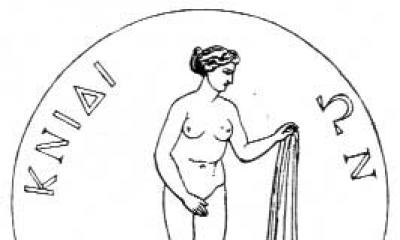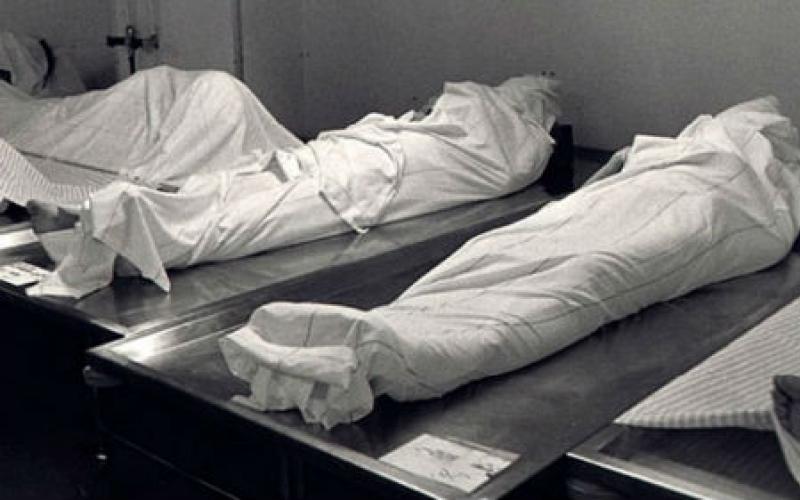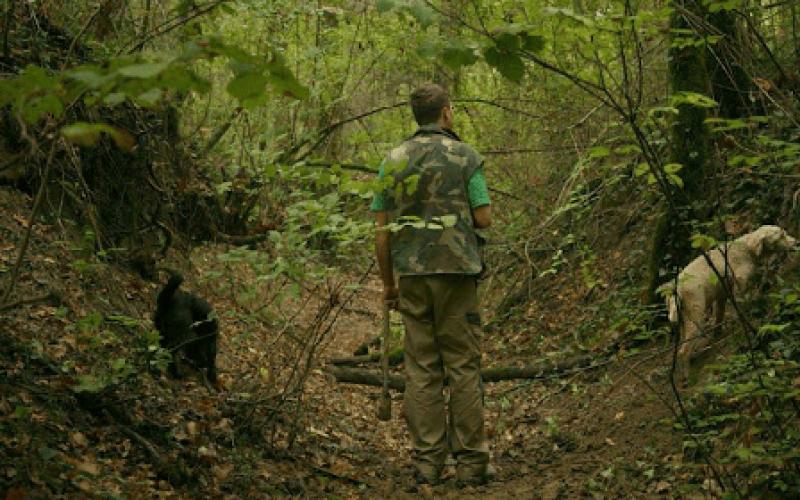What associations do you have when you mention the name of Konstantin Eduardovich Tsiolkovsky? Many will immediately say: "Tsiolkovsky is the father of astronautics." This answer is not surprising, because Konstantin Eduardovich is a legendary person, whose works in the field of physics, chemistry, aerodynamics have become powerful catalysts for scientific and technological progress, including in the field of astronautics. Tsiolkovsky is a genius who opened up new opportunities for people to explore space. But his contribution to the development of civilization is not limited to scientific achievements. As a true Man with a capital letter, he changed the world for the better not only with his ideas, but, most importantly, with his own positive example.
But do we know Tsiolkovsky, not as a scientist, but as a "passionate teacher" (as he called himself)? What do we know about him, who wants to create a new model of society based on cultural and moral values? And besides all this, what do we know about him as a person who overcame himself for the sake of gaining knowledge? Today, when there is an active search for moral guidelines and worthy examples for educating the younger generation, it would be very timely to get to know such a legendary person as Konstantin Eduardovich Tsiolkovsky.
The Man Who Overcame Himself
1869 An ordinary 12-year-old boy Kostya enters the first grade of the Vyatka gymnasium along with his younger brother. But something distinguishes him from his brother and classmates. Genius ability? Not at all. Mathematical talent? No. Something else distinguishes him from his peers - deafness and problems with the perception of information. These are the consequences of a serious illness suffered by him at an early age. Teachers explain new material He only hears faint sounds. They call him to account - he only understands in general terms what is at stake. As the years go by, hearing only gets worse. Suddenly, the father loses his job, which is like a disaster for a family of 13 children. The situation is aggravated by the death of the mother, in 1870. Kostya takes this tragic event hard. Due to stress, his disease progresses inexorably. By the third grade, learning becomes impossible. Boy kicked out of school...
It was not easy for Kostya to cope with the trials of fate. But in his life from an early age there is always something that serves as a support and support. And this “something” is an inexhaustible and sincere desire to know the world and create, create something new with your own hands.
In conditions when the mother dies, there is no material support, the disease progresses, any person may face a similar choice: either become a victim of circumstances (which is much easier and does not require the expenditure of spiritual strength), or overcome oneself, learn an invaluable lesson in life, discover in oneself new abilities. And Kostya makes his choice. Despite the hardships and difficulties, already in his early youth, he firmly decides to direct all his attention to knowledge and work. And this fateful choice gives its positive result.
Following the chosen path, Kostya is diligently studying, independently mastering the school curriculum. He studies the books available in the house, reads everything that is available. Problems with perception, which were peculiar to him a few years earlier, are gradually disappearing. By the age of 14-15, as he himself later writes, “his thought clears up.” At this age, he begins to design complex mechanisms that surprise others: running toy locomotives, a carriage with a windmill, moving easily even against the wind. He invents all this on his own, still practically not knowing physics and not being familiar with any technical literature. At this young age, Konstantin matured the idea of a metal balloon, which would later develop into a series of works that revolutionized aerodynamics.
At the age of 16, feeling a craving for knowledge, the young man goes to Moscow, where he continues his self-education in the city library. By the way, in history you can find many examples of geniuses who were educated in the same way: they independently searched for the necessary sources of information, read a lot, analyzed, and kept records.
Books replace Konstantin's teachers. In addition, in the library he finds not only knowledge, but also like-minded people. Unfortunately, he is forced to live in poverty. Saving on food, he spends the last money on the necessary literature and instruments for experiments. Nevertheless, in the bustle of surrounding troubles, he has a solid support - the confidence that with his knowledge and work he will be able to give people something completely new, previously unthinkable; something that can change the life of all mankind for the better.
Ignited by this idea, Tsiolkovsky every year scientific activity shows ever greater capacity for work. One after another, works appear from under his pen: “Graphic representation of sensations”, “Theory of gases” and others. In 1882, Konstantin Eduardovich learned from Mendeleev that the kinetic theory of gases had already been discovered 25 years ago. This slightly upsets him, but does not become a reason for deep frustration. On the contrary, he makes an important conclusion for himself: the reason for his ignorance is isolation from the scientific community and lack of access to modern scientific literature, which means that this should be corrected. In addition, despite the failure, the scientist continues his research in the field of gases. In connection with this situation, the following words of Tsiolkovsky are indicative: “We must be more courageous and not stop our activities from failures. We must look for their causes and eliminate them.
Fate continues to test Tsiolkovsky: non-recognition of works in the circle of scientists, a fire in an apartment that destroyed his works and models, the death of children (out of seven children, five died during his lifetime) ... Life does not spare Tsiolkovsky, but he steadfastly endures all difficulties, confidently looking into the future believing in your own strength. The scientist firmly believes: “Every creature should live and think as if it can achieve everything. - Sooner or later".
The result of such optimism and purposefulness of the scientist was his global work - such as "Theory of balloons", "Reactive aircrafts”, etc., devoted to the problems of space flights and airship construction. In total, he left us about 600 scientific manuscripts, dozens of popular works and, most importantly, his own example.
- an example of a person who, despite external obstacles, has always been true to his inner desire for knowledge and work for the benefit of mankind. Following this lofty intention, he was able not only to acquire the knowledge that existed at that time in his activity, but also to make a large number of developments completely new for their time. Well-known, which has become winged, the phrase of the scientist: "The Impossible Today Will Be Possible Tomorrow". And now, in 2012, we are stating a fact: thanks to his work, the impossible became possible - people fly into space, actively explore the expanses of the universe. Tsiolkovsky, no doubt, made a scientific and technological breakthrough that changed the fate of all mankind. But is this breakthrough the key to the fate of the genius himself?
Indeed, in the context of his life's difficulties, it can be noted that Konstantin Eduardovich made the main breakthrough of his life in his youth: he overcame himself, did not allow despondency, anger, and depression to triumph. He gave himself entirely to his best intentions and realized himself as a Real Person.
The life of K. E. Tsiolkovsky clearly demonstrates to us how a breakthrough in the consciousness of one person can lead to a breakthrough in the development of an entire civilization. And this is not surprising. Each person who has overcome himself opens up even more opportunities that help him improve and qualitatively change the world around him.
Anna Dubrovskaya,
member of the International public organization "LAGODA"
These people were deprived of the most necessary, they were not accepted by society, many of them did not know what a normal relationship is. But circumstances and life obstacles did not break them, and they not only survived, but also achieved success. Their stories inspire and make you look at your life from a different angle.
Nick Vujicic
Nick Vuychich was born without arms and legs, with a slight resemblance to one foot, in 1982 in Australia in a family of Serbian immigrants. Parents were shocked that their baby was devoid of limbs, because ultrasound never showed any abnormalities. However, they did not abandon their son. On the contrary, they raised him in love and tenderness, trying to make Nick not feel flawed. They sent the boy to a regular school, he played football and swam. It was very difficult for Nick. Once at the age of 10, he even wanted to commit suicide. But, thinking about how his parents would suffer, he did not. And he began to overcome difficulties. In the 7th grade, he was chosen as the head of the school, and once at the age of 19 he was asked to speak in front of an audience. When, after three minutes of his speech, Nick saw the audience crying and thanking him, he realized what he wanted to do in life. Today, Nick travels all over the world, lectures on strength of mind and overcoming himself, acts in films and publishes books. But most importantly, he found his love. Since 2012, Nick has been married to Kanae Miahara, and the couple have two wonderful and, most importantly, healthy sons.
Taylor Morris and Daniel Kelly
In 2012, US Army junior officer Taylor Morris stepped on an improvised mine in Afghanistan. As a result of that terrible explosion, the American lost both arms and legs. Morris did not lose consciousness, he lay on the ground and shouted that the doctors did not approach him, because there could be other mines around. Even in such a situation, when his life was in danger, he did not think about himself, but about others. But life after the explosion did not end. And all thanks to Taylor's beloved - Danielle Kelly. Upon learning of the tragedy, she not only did not refuse him, but became for her man the main support and support in life. She spent days at the rehab center next to Taylor and literally carried him in her arms. And some time later, when Morris was presented with an award - the Bronze Star, he said that he was alive now only thanks to his girlfriend, and if he had hands, he would attach this award to Danielle's chest. Today, Taylor wears dentures, she and Danielle are still the same happy couple. Young people do not miss a single fun event and dream of building a house in the forest on the lake.
Lizzy Velasquez
Lizzie was born with a rare condition that prevents her body from absorbing fat. In order not to die, this girl has to eat every fifteen minutes. With a height of 152 cm, her weight is only 25 kilograms. She is also blind in one eye. Doctors advised her parents to immediately abandon the girl, but they firmly decided that their child should live in a full-fledged family and be loved. And so it went on throughout childhood. Lizzy went to a regular kindergarten and school, was a ringleader and activist. But one day, when the girl was 18 years old, she was sent a link to a video called "The most terrible woman in the world." Opening it, Lizzie was shocked, because she was the heroine of the video. But the worst thing was not the video, but the comments of people who wrote terrible things. Recovering herself, Lizzie firmly decided: she would definitely graduate from college and succeed. And so it happened. This girl became a motivational coach and writer. Today she successfully performs for large audiences with supportive speeches. And he is also striving for a new dream - a big family. “Your accomplishments will be your best response to offenders. Let the insults and hatred of those who do not love you not drag you to the bottom, but push you forward. Prove that those who do not believe in you are wrong. Let your achievements shame those who laughed at you, ”says Lizzy.
Madeline Stuart
Madeline Stewart was born with Down Syndrome. Her mother Rosanna was not afraid of this, she threw all her strength into ensuring that the girl grew up without needing anything, and considered her the best and most beautiful in the world. The only thing that really bothered Roseanne, according to her, was the pretense on the part of friends and acquaintances. Madeline was fond of dancing, swimming, playing basketball and cricket since childhood. And one day, as a teenager, a girl looked in the mirror and decided that excess weight interferes with her life. She began to eat right and go to the gym. As a result, Madeline lost 20 kilograms. The girl posted her results on the Internet, and later she was invited to take part in a photo shoot for a fashion brand. So Madeline became the first model with Down syndrome. Today, the 18-year-old girl, along with her mother, is determined to fight stereotypes in society regarding people with disabilities.
Jessica Long
When this girl was born, she was not Jessica at all, but Tatyana Kirillova. And she was born not in America, where she lives now, but in the Irkutsk region of neighboring Russia. But the girl was born without fibulae, ankles, and many of the bones in her foot, so when the doctors said she wouldn't be able to walk, her parents abandoned her. The baby ended up in an orphanage, where after a while she found a new family - she was adopted by the Americans. In the United States, Jessica has now had an operation, amputating her legs, and purchasing prostheses. So at the age of two, the girl got the opportunity to walk. And then she became interested in sports, in particular swimming. I spent several hours in the pool of my grandparents. A little later, she got to a professional coach and already at the age of 12 she won four gold medals at the Paralympics in Athens, and at 16 she was expected to triumph in Beijing. Today, Jessica is 23 years old, she is a successful swimmer, and the people affectionately call her the Little Mermaid. By the way, a couple of years ago, Jessica visited a remote village in Russia, where her life could have passed, and met with her parents, brothers and sisters and ... forgave them for everything.
Thorstein Lerhol
Thorstein Lerhol was born in the small town of Vang in Norway. Doctors stunned his parents, saying that the boy had a terrible diagnosis - spinal muscular atrophy. Simply put, the brain does not give a signal to the muscles, from which a person simply cannot move. But this did not stop Thorstein's parents from raising an inquisitive and active boy. At 28, he not only communicates with friends, constantly studies science, but also conducts political activities. The guy believes that nothing is impossible, and recently proved it once again, becoming a history teacher in one of the schools in Northern Norway.
Jono Lancaster
Jono Lancaster, 26, from Yorkshire, has a rare genetic disorder called Treacher Collins Syndrome, which causes craniofacial deformities. Biological parents abandoned Jono at birth, but almost immediately he was adopted by a family that gave him all their love. The guy went through a few plastic surgery, which somewhat changed his appearance, but still not drastically. Today, Jono is an active and cheerful person, he loves sports, he has a pretty girlfriend and many friends. Jono also travels a lot, visiting children with the same disease as he has. He supports them, trying to show by his own example that under no circumstances should these guys despair.
December 3 marks the International Day of Persons with Disabilities, proclaimed by the UN General Assembly in 1992 at the suggestion of Russia. In 1981, the World Program of Action for Persons with Disabilities was adopted - the first document that formulated the principles for treating this category of citizens.
According to the UN, there are approximately 1 billion people with disabilities in the world (about 15% of the population), 80% of whom live in developing countries. Most of them face physical, socioeconomic and behavioral barriers that exclude them from equal participation in society. .
UN Secretary-General Ban Ki-moon, in his message on the occasion of the Day of Persons with Disabilities, called for the effective integration of people with disabilities into society. “We must remove all barriers that prevent the inclusion and involvement of persons with disabilities in society, including by changing attitudes towards them that lead to stigmatization and perpetuate discrimination,” said the UN Secretary General.
On the eve of the Paralympics in Sochi in 2014, Russian President Vladimir Putin said that the state should do more for the disabled and people with disabilities, should create conditions for a barrier-free environment. “It is important for us that people see this - not limited opportunities our athletes with disabilities. It educates society in the right way. This pushes administrative structures at all levels to create a barrier-free environment. Not only in sports, but everywhere,” Putin said.
Among Russian politicians There are also people with disabilities. So the deputy of the State Duma of the Russian Federation from the LDPR party Valery Seleznev at a young age lost right hand. Seleznev created an inter-factional deputy association of the State Duma for the disabled. Deputy of the State Duma of the VI convocation from " United Russia» Mikhail Terentiev is a Paralympic champion, world champion among wheelchair athletes, winner of three bronze medals at the European Athletics Championship among athletes with a musculoskeletal disorder and Secretary General of the Russian Paralympic Committee. A Just Russia deputy Alexander Lomakin-Rumyantsev is a group I disabled person and chairman of the All-Russian Society of Disabled People. The first deputy chairman of the State Duma Education Committee, communist Oleg Smolin, is blind from birth. He is the first vice-president of the Russian Paralympic Committee, vice-president of the All-Russian Society of the Blind, an honorary member of the All-Russian Society of the Disabled.
Stephen Hawking is an English theoretical physicist, founder and director of the Center for Theoretical Cosmology at the University of Cambridge. For most of his life, the scientist suffers from multiple sclerosis, which led to paralysis. Hawking communicates using a speech synthesizer
AP Photo/Science Museum, Sarah Lee

Alessandro Zanardi is an Italian racing driver and cyclist who lost both of his legs in an accident in 2001. He is a two-time champion of the 2012 Paralympic Games.
© AP Photo/Alastair Grant

The Russian sledge hockey team won silver at the XI Paralympic Games. In the final, the Russians lost to the Americans, having conceded the only goal. One of the best scorers of the sledge hockey tournament was Evgeny Petrov
© ITAR-TASS/EPA/SERGEI CHIRIKOV

Esther Vergeer is a Dutch tennis player. Considered one of the greatest wheelchair tennis players in history. At the age of nine she lost her legs. Esther Vergeer - multiple Grand Slam winner, seven-time world champion, four-time Olympic champion
© AP Photo/Alastair Grant

Skier Mikhalina Lysova and her track leader Alexei Ivanov achieved success at the Sochi Paralympics, winning gold medals in the 6 and 10 km distances in the visually impaired category

Jim Armstrong is a member of the Canadian wheelchair curling team. In 2009, his wife died and he was left alone with three children. But he is not going to give up and end his career, because he believes that all life's difficulties did not affect him in any way.
© ITAR-TASS/ Vladimir Smirnov

Italy's Francesca Porcellato has competed in six Summer and three Winter Paralympic Games, including competitions in Sochi. Three-time winner of the Games: twice won in 1988 in Seoul (in the 100 m and in the relay) and in 2010 in the cross-country skiing in the classic sprint
© ITAR-TASS/ Artem Korotaev

Adopted in the United States, a native of Ukraine Oksana Masters, having lost both legs, began to row. In rowing, she won bronze at the 2012 Paralympics, and at the Winter Games in Sochi, she won silver and bronze in cross-country skiing.
© AP Photo/Emilio Morenatti
![]()
Alexandra Frantseva from Russia wins silver in super-G (visually impaired) in alpine skiing at the XI Paralympic Winter Games
© ITAR-TASS/ Artem Korotaev

Jessica Long is an American Paralympic swimmer of Russian origin. Multiple champion of the Paralympics, world championships, world record holder among athletes without legs
© EPA/JONATHAN BRADY

Eric Weichenmeier is the first climber in the world to reach the summit of Everest while blind. He conquered many mountain peaks, including Kilimanjaro and Elbrus. Lost his sight at the age of 13, but managed to become a high school teacher, then a wrestling coach and a world-class athlete
© EPA/FRANCIS R. MALASIG

Despite his blindness, Italian opera singer Andrea Bocelli has become one of the most memorable voices of modern opera and pop music.
©AP Photo/Arnulfo Franco










